
Illustrative Math Alignment: Grade 6 Unit 1
Dividing Fractions
Lesson 15: Volume of Prisms
Use the following Media4Math resources with this Illustrative Math lesson.
| Thumbnail Image | Title | Body | Curriculum Nodes |
|---|---|---|---|
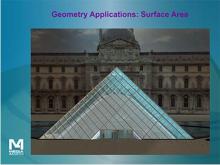
|
Promethean Flipchart: Geometry Applications: Area And Volume 2 | The glass-paneled pyramid at the Louvre Museum in Paris is a tessellation of rhombus-shaped glass panels. Students create a model of the pyramid to calculate the number of panels used to cover the surface area of the pyramid. Note: The download for this resources is the Promethean Flipchart. To access the full video [Geometry Applications: Area and Volume, Segment 2: Surface Area]: https://media4math.com/library/geometry-applications-area-and-volume-segment-2-surface-area This video includes a Video Transcript: https://www.media4math.com/library/video-transcript-geometry-applications-area-and-volume-segment-2-surface-area |
Applications of Surface Area and Volume |

|
Promethean Flipchart: Geometry Applications: Area And Volume 2 | The glass-paneled pyramid at the Louvre Museum in Paris is a tessellation of rhombus-shaped glass panels. Students create a model of the pyramid to calculate the number of panels used to cover the surface area of the pyramid. Note: The download for this resources is the Promethean Flipchart. To access the full video [Geometry Applications: Area and Volume, Segment 2: Surface Area]: https://media4math.com/library/geometry-applications-area-and-volume-segment-2-surface-area This video includes a Video Transcript: https://www.media4math.com/library/video-transcript-geometry-applications-area-and-volume-segment-2-surface-area |
Applications of Surface Area and Volume |
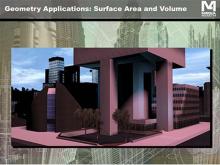
|
Promethean Flipchart: Geometry Applications: Area And Volume 3 | The Citibank Tower in New York City presents some unique design challenges. In addition it has to cope with a problem that all tall structure have to deal with: heat loss. By managing the ratio of surface area to volume, a skyscraper can effective manage heat loss. Note: The download for this resources is the Promethean Flipchart. To access the full video [Geometry Applications: Area and Volume, Segment 3: Ratio of Surface Area to Volume]: https://www.media4math.com/library/geometry-applications-area-and-volume-segment-3-ratio-surface-area-volume |
Applications of Surface Area and Volume |

|
Promethean Flipchart: Geometry Applications: Area And Volume 3 | The Citibank Tower in New York City presents some unique design challenges. In addition it has to cope with a problem that all tall structure have to deal with: heat loss. By managing the ratio of surface area to volume, a skyscraper can effective manage heat loss. Note: The download for this resources is the Promethean Flipchart. To access the full video [Geometry Applications: Area and Volume, Segment 3: Ratio of Surface Area to Volume]: https://www.media4math.com/library/geometry-applications-area-and-volume-segment-3-ratio-surface-area-volume |
Applications of Surface Area and Volume |

|
Promethean Flipchart: Geometry Applications: Area And Volume 3 | The Citibank Tower in New York City presents some unique design challenges. In addition it has to cope with a problem that all tall structure have to deal with: heat loss. By managing the ratio of surface area to volume, a skyscraper can effective manage heat loss. Note: The download for this resources is the Promethean Flipchart. To access the full video [Geometry Applications: Area and Volume, Segment 3: Ratio of Surface Area to Volume]: https://www.media4math.com/library/geometry-applications-area-and-volume-segment-3-ratio-surface-area-volume |
Applications of Surface Area and Volume |

|
Promethean Flipchart: Geometry Applications: Area And Volume 3 | The Citibank Tower in New York City presents some unique design challenges. In addition it has to cope with a problem that all tall structure have to deal with: heat loss. By managing the ratio of surface area to volume, a skyscraper can effective manage heat loss. Note: The download for this resources is the Promethean Flipchart. To access the full video [Geometry Applications: Area and Volume, Segment 3: Ratio of Surface Area to Volume]: https://www.media4math.com/library/geometry-applications-area-and-volume-segment-3-ratio-surface-area-volume |
Applications of Surface Area and Volume |

|
Promethean Flipchart: Geometry Applications: Area And Volume 3 | The Citibank Tower in New York City presents some unique design challenges. In addition it has to cope with a problem that all tall structure have to deal with: heat loss. By managing the ratio of surface area to volume, a skyscraper can effective manage heat loss. Note: The download for this resources is the Promethean Flipchart. To access the full video [Geometry Applications: Area and Volume, Segment 3: Ratio of Surface Area to Volume]: https://www.media4math.com/library/geometry-applications-area-and-volume-segment-3-ratio-surface-area-volume |
Applications of Surface Area and Volume |

|
MATH EXAMPLES--Volume | MATH EXAMPLES--Volume
This set of tutorials provides 24 examples of how to find the volume of various 3-dimensional geometric figures. NOTE: The download is a PPT file. |
Volume |

|
Math in the News: Issue 8--Tornado Damage | Math in the News: Issue 8--Tornado Damage
5/9/11. In this issue we look at tornado season. In particular we study why the swirling winds of a tornado are so damaging. This is part of the Math in the News collection. To see the complete collection, click on this link. Note: The download is a PPT file.Related ResourcesTo see resources related to this topic click on the Related Resources tab above. |
Data Analysis |
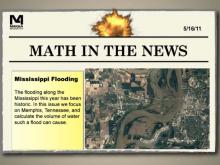
|
Math in the News: Issue 9--Mississippi Floods | Math in the News: Issue 9--Mississippi Floods
5/16/11. In this issue we look at the flooding along the Mississippi. In particular we analyze the flooding along Memphis, Tennessee. We develop a model for predicting the amount of flooding. This is part of the Math in the News collection. To see the complete collection, click on this link. Note: The download is a PPT file.Related ResourcesTo see resources related to this topic click on the Related Resources tab above. |
Volume |
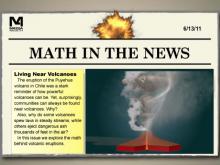
|
Math in the News: Issue 13--Living Near Volcanoes | Math in the News: Issue 13--Living Near Volcanoes
6/13/11. In this issue we explore the volcanic eruption in Chile that resulted in a huge plume of smoke and ash that was miles high. We explore the viscosity of lava that makes such eruptions possible. This is part of the Math in the News collection. To see the complete collection, click on this link. Note: The download is a PPT file.Related ResourcesTo see resources related to this topic click on the Related Resources tab above. |
Volume |
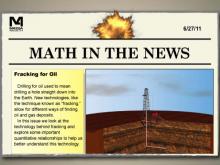
|
Math in the News: Issue 15--Fracking for Oil | Math in the News: Issue 15--Fracking for Oil
6/27/11. In this issue we look at the technology of hydraulic fracking. In particular, we estimate the amount of drilling required for such wells. This is part of the Math in the News collection. To see the complete collection, click on this link. Note: The download is a PPT file.Related ResourcesTo see resources related to this topic click on the Related Resources tab above. |
Volume |
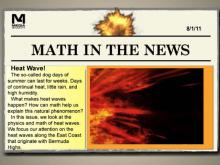
|
Math in the News: Issue 20--Heat Wave! | Math in the News: Issue 20--Heat Wave!
8/1/11. In this issue we look at the physics of air pressure and the forces that give rise to heat waves. This is part of the Math in the News collection. To see the complete collection, click on this link. Note: The download is a PPT file.Related ResourcesTo see resources related to this topic click on the Related Resources tab above. |
Data Analysis |
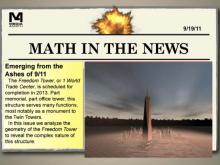
|
Math in the News: Issue 27--Emerging from the Ashes of 9/11 | Math in the News: Issue 27--Emerging from the Ashes of 9/11
9/19/11. To commemorate the 10-year anniversary of the 911, we look at the geometry and architecture of the Freedom Tower, currently under construction. This is part of the Math in the News collection. To see the complete collection, click on this link. Note: The download is a PPT file.Related ResourcesTo see resources related to this topic click on the Related Resources tab above. |
3-Dimensional Figures |
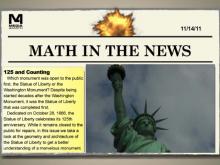
|
Math in the News: Issue 35--125 and Counting | Math in the News: Issue 35--125 and Counting
11/14/11. In this issue we commemorate the 125th anniversary of the Statue of Liberty. We also look at the geometry and architecture of this monument. This is part of the Math in the News collection. To see the complete collection, click on this link. Note: The download is a PPT file.Related ResourcesTo see resources related to this topic click on the Related Resources tab above. |
Surface Area and Volume |
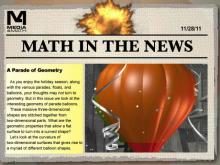
|
Math in the News: Issue 37--A Parade of Geometry | Math in the News: Issue 37--A Parade of Geometry
11/28/11. In this issue we look at the geometry of parade balloons. This is part of the Math in the News collection. To see the complete collection, click on this link. Note: The download is a PPT file.Related ResourcesTo see resources related to this topic click on the Related Resources tab above. |
Surface Area and Volume |

|
Math in the News: Issue 38--December 7, 1941 | Math in the News: Issue 38--December 7, 1941
12/7/11. In this issue we look at the heroic work of salvaging and retrofitting many of the ships sunk during the attack on Pearl Harbor. This is part of the Math in the News collection. To see the complete collection, click on this link. Note: The download is a PPT file.Related ResourcesTo see resources related to this topic click on the Related Resources tab above. |
Surface Area and Volume |
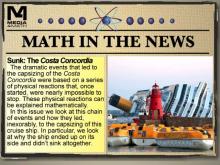
|
Math in the News: Issue 44--Sunk: The Costa Concordia | Math in the News: Issue 44--Sunk: The Costa Concordia
January 2012. In this issue of Math in the News we analyze how the Costa Concordia sank. This is part of the Math in the News collection. To see the complete collection, click on this link. Note: The download is a PPT file.Related ResourcesTo see resources related to this topic click on the Related Resources tab above. |
Surface Area and Volume |
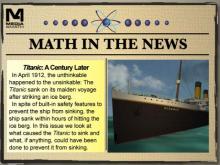
|
Math in the News: Issue 53--Titanic: A Century Later | Math in the News: Issue 53--Titanic: A Century Later
April 2012. In this issue of Math in the News we analyze the sinking of the Titanic. It has been a hundred years, yet the story of the sinkin g of the Titanic still fascinates. This is part of the Math in the News collection. To see the complete collection, click on this link. Note: The download is a PPT file.Related ResourcesTo see resources related to this topic click on the Related Resources tab above. |
Surface Area and Volume |

|
Math in the News: Issue 56--The Freedom Tower | Math in the News: Issue 56--The Freedom Tower
May 2012. In this issue of Math in the News we look at the architecture of the Freedom Tower, now that it has become the tallest building in NYC. This is part of the Math in the News collection. To see the complete collection, click on this link. Note: The download is a PPT file.Related ResourcesTo see resources related to this topic click on the Related Resources tab above. |
3-Dimensional Figures |
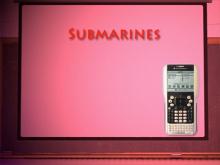
|
VIDEO: Algebra Applications: Rational Functions, 1 | VIDEO: Algebra Applications: Rational Functions, 1
TopicRational Functions DescriptionExplains submarine pressure and volume relationships using rational functions, illustrating depth impacts on vessel integrity and scuba safety. Relevance: This video provides a practical perspective on Rational Functions, making abstract concepts more accessible through real-world applications. |
Rational Expressions and Rational Functions and Equations |

|
VIDEO: Algebra Applications: Rational Functions, 2 | VIDEO: Algebra Applications: Rational Functions, 2
TopicRational Functions DescriptionExamines surface area to volume ratios in animals using rational functions, connecting these ratios to evolutionary adaptations in different climates. Relevance: This video provides a practical perspective on Rational Functions, making abstract concepts more accessible through real-world applications. |
Rational Expressions and Rational Functions and Equations |

|
VIDEO: Algebra Applications: Rational Functions, 2 | VIDEO: Algebra Applications: Rational Functions, 2
TopicRational Functions DescriptionExamines surface area to volume ratios in animals using rational functions, connecting these ratios to evolutionary adaptations in different climates. Relevance: This video provides a practical perspective on Rational Functions, making abstract concepts more accessible through real-world applications. |
Rational Expressions and Rational Functions and Equations |
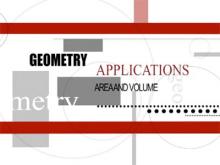
|
VIDEO: Geometry Applications: Area and Volume | VIDEO: Geometry Applications: Area and Volume
TopicArea and Volume |
Applications of Surface Area and Volume, Surface Area and Volume |

|
VIDEO: Geometry Applications: Area and Volume | VIDEO: Geometry Applications: Area and Volume
TopicArea and Volume |
Applications of Surface Area and Volume, Surface Area and Volume |

|
VIDEO: Geometry Applications: Area and Volume | VIDEO: Geometry Applications: Area and Volume
TopicArea and Volume |
Applications of Surface Area and Volume, Surface Area and Volume |

|
VIDEO: Geometry Applications: Area and Volume | VIDEO: Geometry Applications: Area and Volume
TopicArea and Volume |
Applications of Surface Area and Volume, Surface Area and Volume |

|
VIDEO: Geometry Applications: Area and Volume | VIDEO: Geometry Applications: Area and Volume
TopicArea and Volume |
Applications of Surface Area and Volume, Surface Area and Volume |

|
VIDEO: Geometry Applications: Area and Volume, 1 | VIDEO: Geometry Applications: Area and Volume, 1
TopicArea and Volume DescriptionThis segment explores the concept of density, using the Titanic to demonstrate buoyancy and the relationship between mass and volume. It introduces direct variation, rational functions, and how these principles apply to ship design for optimal floating capacity. |
Applications of Surface Area and Volume, Surface Area and Volume |

|
VIDEO: Geometry Applications: Area and Volume, 1 | VIDEO: Geometry Applications: Area and Volume, 1
TopicArea and Volume DescriptionThis segment explores the concept of density, using the Titanic to demonstrate buoyancy and the relationship between mass and volume. It introduces direct variation, rational functions, and how these principles apply to ship design for optimal floating capacity. |
Applications of Surface Area and Volume, Surface Area and Volume |

|
VIDEO: Geometry Applications: Area and Volume, 1 | VIDEO: Geometry Applications: Area and Volume, 1
TopicArea and Volume DescriptionThis segment explores the concept of density, using the Titanic to demonstrate buoyancy and the relationship between mass and volume. It introduces direct variation, rational functions, and how these principles apply to ship design for optimal floating capacity. |
Applications of Surface Area and Volume, Surface Area and Volume |

|
VIDEO: Geometry Applications: Area and Volume, 1 | VIDEO: Geometry Applications: Area and Volume, 1
TopicArea and Volume DescriptionThis segment explores the concept of density, using the Titanic to demonstrate buoyancy and the relationship between mass and volume. It introduces direct variation, rational functions, and how these principles apply to ship design for optimal floating capacity. |
Applications of Surface Area and Volume, Surface Area and Volume |

|
VIDEO: Geometry Applications: Area and Volume, 1 | VIDEO: Geometry Applications: Area and Volume, 1
TopicArea and Volume DescriptionThis segment explores the concept of density, using the Titanic to demonstrate buoyancy and the relationship between mass and volume. It introduces direct variation, rational functions, and how these principles apply to ship design for optimal floating capacity. |
Applications of Surface Area and Volume, Surface Area and Volume |

|
VIDEO: Geometry Applications: Area and Volume, 1 | VIDEO: Geometry Applications: Area and Volume, 1
TopicArea and Volume DescriptionThis segment explores the concept of density, using the Titanic to demonstrate buoyancy and the relationship between mass and volume. It introduces direct variation, rational functions, and how these principles apply to ship design for optimal floating capacity. |
Applications of Surface Area and Volume, Surface Area and Volume |

|
VIDEO: Geometry Applications: Area and Volume, 1 | VIDEO: Geometry Applications: Area and Volume, 1
TopicArea and Volume DescriptionThis segment explores the concept of density, using the Titanic to demonstrate buoyancy and the relationship between mass and volume. It introduces direct variation, rational functions, and how these principles apply to ship design for optimal floating capacity. |
Applications of Surface Area and Volume, Surface Area and Volume |

|
VIDEO: Geometry Applications: Area and Volume, 1 | VIDEO: Geometry Applications: Area and Volume, 1
TopicArea and Volume DescriptionThis segment explores the concept of density, using the Titanic to demonstrate buoyancy and the relationship between mass and volume. It introduces direct variation, rational functions, and how these principles apply to ship design for optimal floating capacity. |
Applications of Surface Area and Volume, Surface Area and Volume |

|
VIDEO: Geometry Applications: Area and Volume, 1 | VIDEO: Geometry Applications: Area and Volume, 1
TopicArea and Volume DescriptionThis segment explores the concept of density, using the Titanic to demonstrate buoyancy and the relationship between mass and volume. It introduces direct variation, rational functions, and how these principles apply to ship design for optimal floating capacity. |
Applications of Surface Area and Volume, Surface Area and Volume |

|
VIDEO: Geometry Applications: Area and Volume, 2 | VIDEO: Geometry Applications: Area and Volume, 2
TopicArea and Volume DescriptionThis segment focuses on surface area, using the Louvre Pyramid to highlight geometric tessellations and triangular net calculations. It explains the surface area formula for pyramids and how these calculations are applied in architectural design and material efficiency. |
Applications of Surface Area and Volume, Surface Area and Volume |

|
VIDEO: Geometry Applications: Area and Volume, 2 | VIDEO: Geometry Applications: Area and Volume, 2
TopicArea and Volume DescriptionThis segment focuses on surface area, using the Louvre Pyramid to highlight geometric tessellations and triangular net calculations. It explains the surface area formula for pyramids and how these calculations are applied in architectural design and material efficiency. |
Applications of Surface Area and Volume, Surface Area and Volume |

|
VIDEO: Geometry Applications: Area and Volume, 2 | VIDEO: Geometry Applications: Area and Volume, 2
TopicArea and Volume DescriptionThis segment focuses on surface area, using the Louvre Pyramid to highlight geometric tessellations and triangular net calculations. It explains the surface area formula for pyramids and how these calculations are applied in architectural design and material efficiency. |
Applications of Surface Area and Volume, Surface Area and Volume |

|
VIDEO: Geometry Applications: Area and Volume, 2 | VIDEO: Geometry Applications: Area and Volume, 2
TopicArea and Volume DescriptionThis segment focuses on surface area, using the Louvre Pyramid to highlight geometric tessellations and triangular net calculations. It explains the surface area formula for pyramids and how these calculations are applied in architectural design and material efficiency. |
Applications of Surface Area and Volume, Surface Area and Volume |

|
VIDEO: Geometry Applications: Area and Volume, 2 | VIDEO: Geometry Applications: Area and Volume, 2
TopicArea and Volume DescriptionThis segment focuses on surface area, using the Louvre Pyramid to highlight geometric tessellations and triangular net calculations. It explains the surface area formula for pyramids and how these calculations are applied in architectural design and material efficiency. |
Applications of Surface Area and Volume, Surface Area and Volume |

|
VIDEO: Geometry Applications: Area and Volume, 2 | VIDEO: Geometry Applications: Area and Volume, 2
TopicArea and Volume DescriptionThis segment focuses on surface area, using the Louvre Pyramid to highlight geometric tessellations and triangular net calculations. It explains the surface area formula for pyramids and how these calculations are applied in architectural design and material efficiency. |
Applications of Surface Area and Volume, Surface Area and Volume |

|
VIDEO: Geometry Applications: Area and Volume, 2 | VIDEO: Geometry Applications: Area and Volume, 2
TopicArea and Volume DescriptionThis segment focuses on surface area, using the Louvre Pyramid to highlight geometric tessellations and triangular net calculations. It explains the surface area formula for pyramids and how these calculations are applied in architectural design and material efficiency. |
Applications of Surface Area and Volume, Surface Area and Volume |

|
VIDEO: Geometry Applications: Area and Volume, 2 | VIDEO: Geometry Applications: Area and Volume, 2
TopicArea and Volume DescriptionThis segment focuses on surface area, using the Louvre Pyramid to highlight geometric tessellations and triangular net calculations. It explains the surface area formula for pyramids and how these calculations are applied in architectural design and material efficiency. |
Applications of Surface Area and Volume, Surface Area and Volume |

|
VIDEO: Geometry Applications: Area and Volume, 2 | VIDEO: Geometry Applications: Area and Volume, 2
TopicArea and Volume DescriptionThis segment focuses on surface area, using the Louvre Pyramid to highlight geometric tessellations and triangular net calculations. It explains the surface area formula for pyramids and how these calculations are applied in architectural design and material efficiency. |
Applications of Surface Area and Volume, Surface Area and Volume |

|
VIDEO: Geometry Applications: Area and Volume, 2 | VIDEO: Geometry Applications: Area and Volume, 2
TopicArea and Volume DescriptionThis segment focuses on surface area, using the Louvre Pyramid to highlight geometric tessellations and triangular net calculations. It explains the surface area formula for pyramids and how these calculations are applied in architectural design and material efficiency. |
Applications of Surface Area and Volume, Surface Area and Volume |
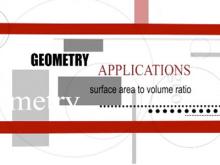
|
VIDEO: Geometry Applications: Area and Volume, 3 | VIDEO: Geometry Applications: Area and Volume, 3
TopicArea and Volume DescriptionThis segment explores the surface area-to-volume ratio using the Citigroup Building as an example. It discusses how this ratio impacts energy efficiency in buildings and compares it to natural examples like polar bears and snakes for context. |
Applications of Surface Area and Volume, Surface Area and Volume |

|
VIDEO: Geometry Applications: Area and Volume, 3 | VIDEO: Geometry Applications: Area and Volume, 3
TopicArea and Volume DescriptionThis segment explores the surface area-to-volume ratio using the Citigroup Building as an example. It discusses how this ratio impacts energy efficiency in buildings and compares it to natural examples like polar bears and snakes for context. |
Applications of Surface Area and Volume, Surface Area and Volume |

|
VIDEO: Geometry Applications: Area and Volume, 3 | VIDEO: Geometry Applications: Area and Volume, 3
TopicArea and Volume DescriptionThis segment explores the surface area-to-volume ratio using the Citigroup Building as an example. It discusses how this ratio impacts energy efficiency in buildings and compares it to natural examples like polar bears and snakes for context. |
Applications of Surface Area and Volume, Surface Area and Volume |